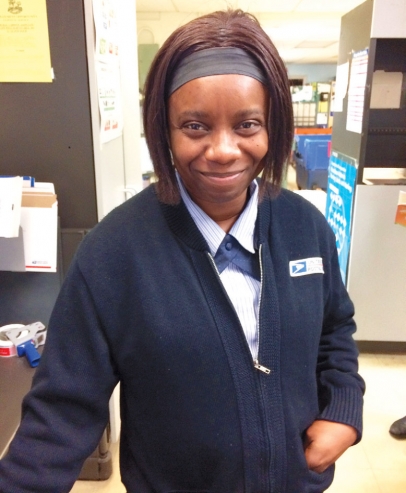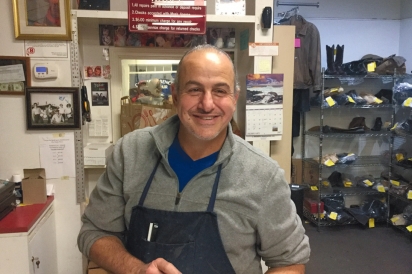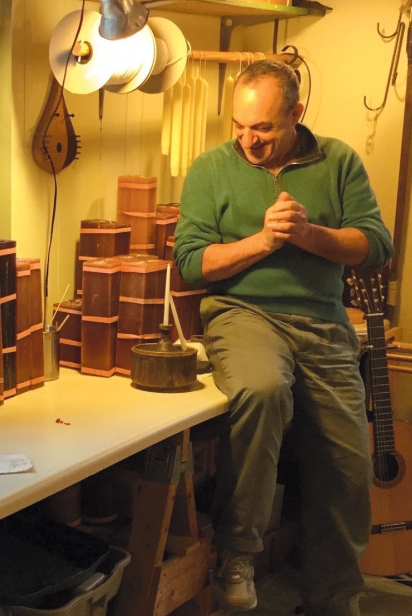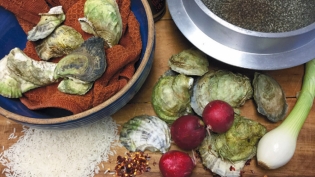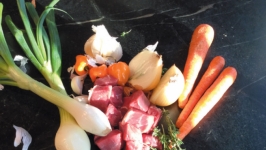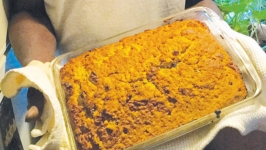Ethnic Home Cooking on Cape Cod
Cape Cod’s population includes many people from different ethnic backgrounds, so after writing Great Italian American Food in New England: History, Traditions & Memories, I decided to look at my own community. During the course of my interviews, I found their recipes and cooking techniques fascinating. Some I’d never heard of. I was also curious to learn where they shop to secure special ingredients.
At the post office, I met Kesha Wentworth, from Jamaica. Our conversation started when I picked up the mail and gave her a few Scotch bonnet peppers from my garden. “I use these in most of my dishes,” she said, “especially when I prepare curried goat, usually around the holidays.”
I have been to Jamaica twice, but I’d never eaten curry goat. Intrigued, I asked if there is a place to buy goat meat here on the Cape. “Not really,” she replied. “In the fall or around the holidays, I usually go to Manchester Farm in Rhode Island. The farm has two kinds of goats, the big mountain and the smaller kid. I like the smaller one because the meat is more tender. I pick out my goat, which is then slaughtered, cut up, and packaged, and then I put it in my freezer at home for the winter months.” She also talked a little about her background. In Jamaica, Kesha went to Heart Vocational School, where she studied cooking for two years before coming to Cape Cod eleven years ago.
Resources mentioned in this article:
Manchester Farm
Owner Arthur Manchester raises goats, pigs, sheep, and cows on this hundred-year-old livestock farm.
55 Corys Lane, Tiverton, Rhode Island
401-624-0205
Windfall Market
(stocks goat meat)
77 Scranton Ave, Falmouth
508-548-0254 / windfallmarket.com
Gemini Caribbean Mart
18 Center Street, Hyannis
508-790-0500
Byron Scarlett, another Jamaican, lives in Sandwich. Byron is an exceptionally knowledgeable gardener and landscaper, and loves to cook his traditional dishes. During the summer, he grows callaloo and sells it to the Gemini Caribbean Market in Hyannis (located across from the Hyannis Transportation Center). The store also has a takeout counter with an assortment of Jamaican and Caribbean foods. On any given day, you may find jerk chicken, curry goat, oxtail stew, fried chicken, and side dishes such as plantains, rice and peas, and ackee.
When Byron gives me bunches of freshly-picked callaloo from his garden, I cook it the way Byron does: heat a little olive oil in a large pan, add the callaloo, fresh chopped garlic, and a dash of red pepper flakes, and cook 2 to 3 minutes, tossing until wilted.
Callaloo (sometimes calaloo or kallaloo) is a popular Caribbean green leaf vegetable, similar to spinach, originating in West Africa. It is prepared and served in different ways across the Caribbean.
I met Victor Hadawar, owner of The Cobbler’s Bench, a shoe and leather shop in Centerville, when I needed to repair my leather briefcase and a pair of shoes. I detected a slight accent as he talked, and he told me he was from Palestine, which led to a long discussion about his background, food and cooking.
“My parents, three brothers and three sisters, and I migrated to Los Angeles in 1967,” he said. “My father opened a shoe leather shop like this one and I started working for him when I was twelve. Later, my brothers also worked in the shop. It became a family business. I ended up on the Cape because one of my brothers and his wife moved to Provincetown and opened a shoe repair shop there. His wife sold flowers next door. It just so happened that we all ended up here, except for one brother.
Doctor Yong Chun, who lives in Brewster, is my dentist. I was interested to talk to him about his life, cooking, and food traditions, but as it’s difficult to converse with someone who’s working on your mouth, I set up a time for an interview.
Originally from Seoul, Korea, the Chun family emigrated to Hawaii when Yong was nine. The family consisted of his mother, father, grandmother and five sisters.
“I went to elementary school there and learned to speak English,” he told me. “If you listen very carefully, you can hear my Hawaiian accent!”
Eventually, the family moved to Chicago. “Years later, we all went our separate ways. That was seventeen years ago. I loved the ocean and wanted to be near the sea, like where I lived in Hawaii.”
I asked him where his interest in cooking came from. “I learned to cook our traditional Korean home-style cuisine from my mom and grandma. My father loved hosting parties and large get-togethers, and we always had food. My older sisters helped. As they all left the house, got married, my mom needed help in the kitchen, so I started cooking with her and my grandmother. I was about eleven at the time. Later, in my junior year of high school, I took cooking classes. This expanded my knowledge of Western cooking methods and ingredients.”
I asked Dr. Chun where he purchases his ingredients, “For fish and shellfish, I usually get my own. Right now, I am on my way to get some oysters for a meal I am making for tonight’s dinner. It is going to be rice with oysters.”
Korean food is unfamiliar to me, so with these recipes Dr. Chun has given me a little insight into the cuisine of his native country.
Agostino di Bari is from Puglia, Italy. He owns Honey Candle Company in Orleans, where he makes artisanal beeswax candles. Agostino came to this country in the winter of 1990.
“It was my passion for the sea that brought me here,” Agostino said. “In my country, I was a commercial fisherman and always lived by the ocean.” I knew Puglia was noted for legumes, like chickpeas, lentils, and especially fava beans with many variations. Agostino told me, “The dried ones are the traditional way of cooking fava beans. The women in the town boil them, remove the shell, and mash with a wooden spoon. The beautiful fresh green ones are sometimes cooked with cuttlefish, octopus, or even squid in a fresh tomato sauce.”
John F. Carafoli is an author, food writer, and international food stylist. He wrote the first book on food styling, Food Photography and Styling. Other books include Cape Cod Chef’s Table, Recipes from Buzzards Bay to Provincetown, and Great Italian American Food in New England, History, Traditions & Memories.
Carafoli has been published in The New York Times, Gastronomica, The Journal of Food and Culture, and The Boston Globe. Carafoli was also featured on the TV Food Network’s Ultimate Kitchens, and NPR. Closer to home he writes for The Cape Cod Times and Edible Cape Cod where he won an EDDY for Best use of Recipes in a feature. This October join Carafoli for a culinary food and music tour to Tuscany, Italy.


